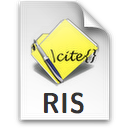

| ORIGINAL ARTICLE |
 |
 |
Heavy metal pollution is a significant global concern, particularly for its impact on agricultural crops, necessitating thorough investigation. This study examined the effects of lead, a known carcinogen, on the physiological, biochemical, and cytological properties of Allium sativum (garlic). Garlic is renowned for its diverse organo-sulfur compounds with therapeutic benefits and antioxidant potential. Following seven days of lead exposure in the soil, the levels of chlorophyll, carotenoids, and crude proteins in Allium sativum decreased by 80%, 68%, and 46.9%, respectively. These reductions are attributed to the inhibition of the enzyme α-aminolevulinate and the impaired uptake of essential nutrients like iron and magnesium (Burzyński et al., 1987). Analysis of the mitotic and abnormality indices revealed the detrimental effects of lead. Additionally, atomic absorption analysis indicated a translocation factor of 0.89 in the leaves of garlic plants exposed to 100 mg/kg of lead in the soil. A decline up to 7.4% in the mitotic index and an 11.34% increase in the abnormality index in the 100 mgkg-1 treated plant suggest clastogenic effect of lead on Allium sativum.
Key words: Allium Sativum, AAS, Lead stress, Mitotic abnormality, Pigment suppression

